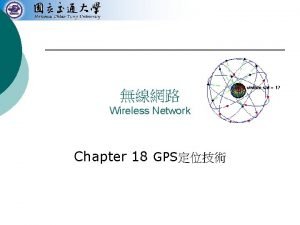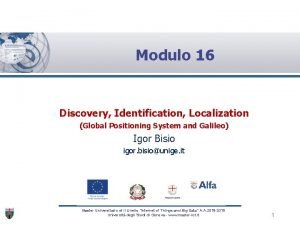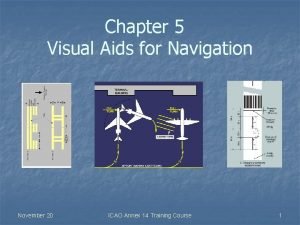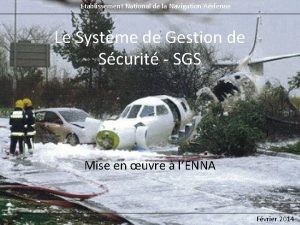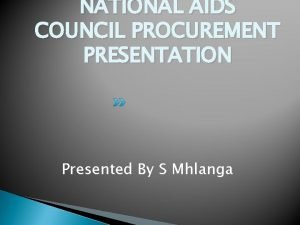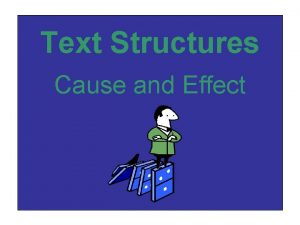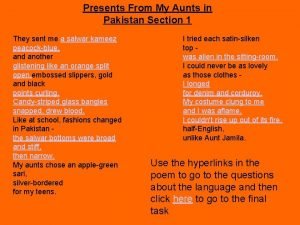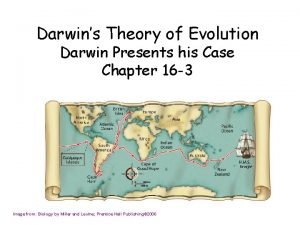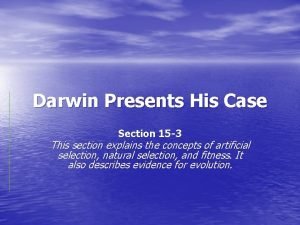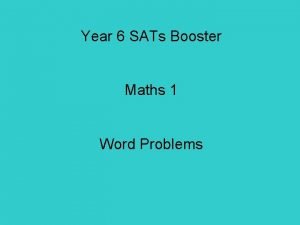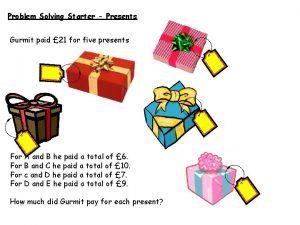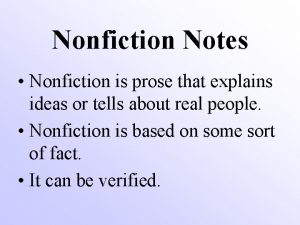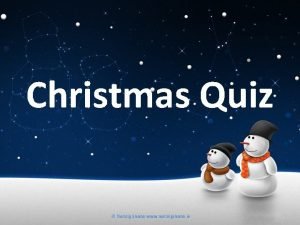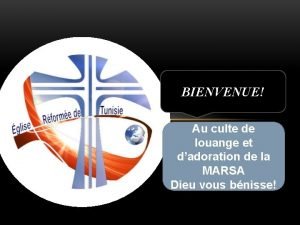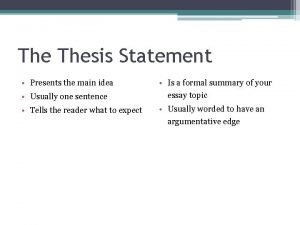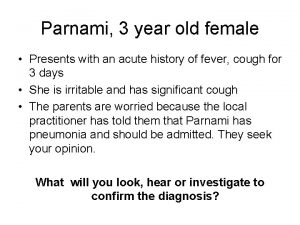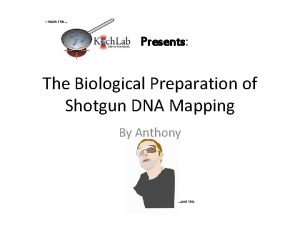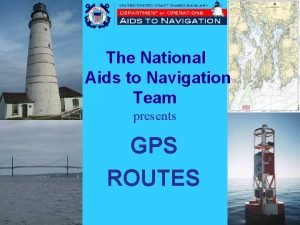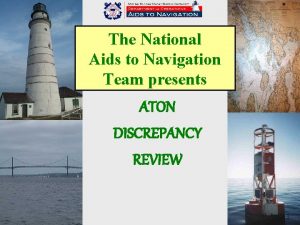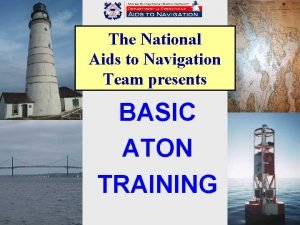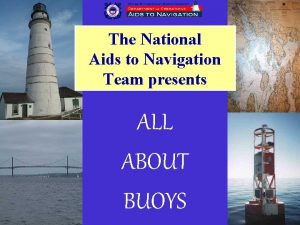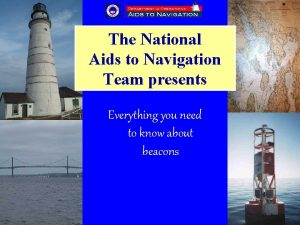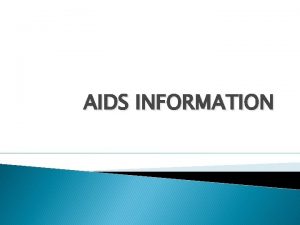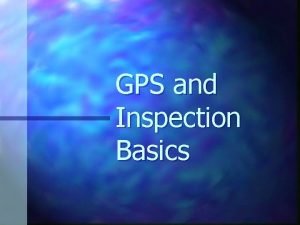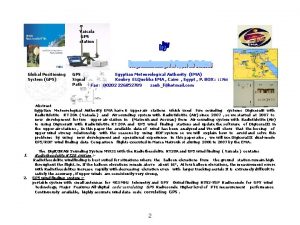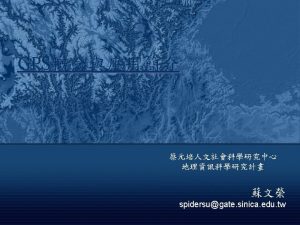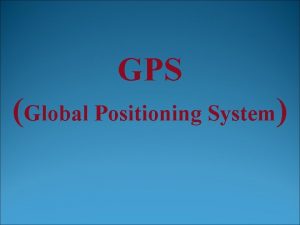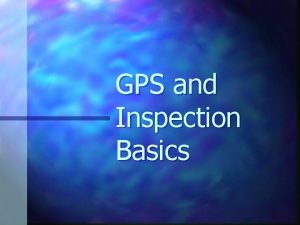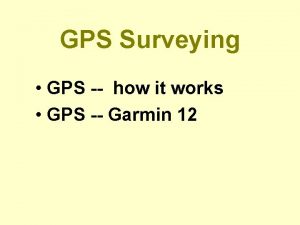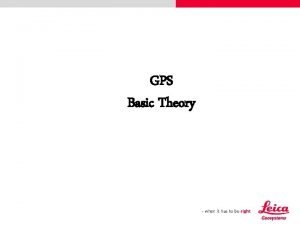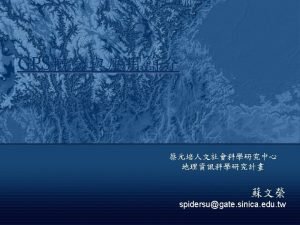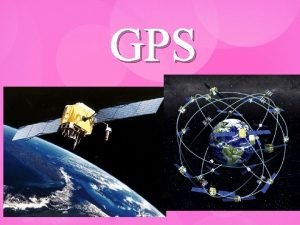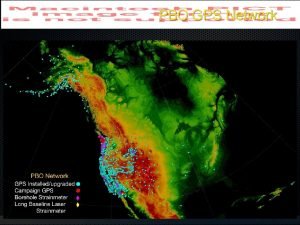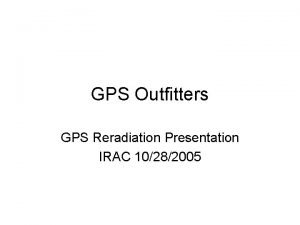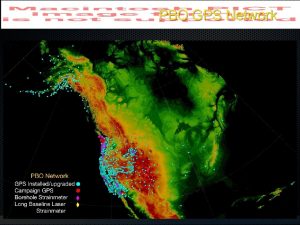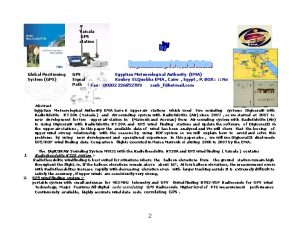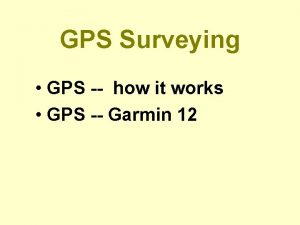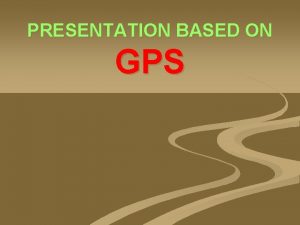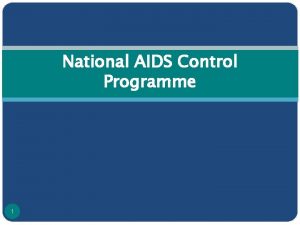The National Aids to Navigation Team presents GPS
























- Slides: 24

The National Aids to Navigation Team presents GPS Routes Navigation PLUS 1

A waypoint (WPT or WP) is a designated location with geographic Coordinates—a Fix. Navigation PLUS 2

A group of waypoints, linked together in a logical sequence on a GPS, is called a “route. ” Navigation PLUS 3

Entering Waypoints Enter in name/icon. Enter LAT/LON. Enter message (not recommended) Waypoint number. (Keep it simple) 0001 Menu of waypoint options at bottom. Bearing and Distance Navigation PLUS 4

GPS Position This is not a Page compass Direction bar reading! at top of screen. Course and Speed Mileage and Altitude Position Time Navigation PLUS 5

A simple waypoint entry screen Navigation PLUS 6

Verifying your present position as a waypoint WPT 4 Use a simple numbering system. Do not place your position on top of the Aid. Risk of collision! Validate every waypoint before using it as a permanent waypoint in a route. WPT 3 WPT 2 WPT 1 Navigation PLUS 7

Waypoints are used extensively in GPS navigation: • As boundaries between voyage segments – LEGS. • • To mark turning points, destinations, and aids to navigation. To mark hazards to navigation. Navigation PLUS 8

Waypoint Use Marks hazards to Mark the Marks the turn in navigation or boundaries a channel obstructions. between legs. Rock WPT 4 WPT 3 WPT 2 WPT 1 Navigation PLUS 9

GPS receivers enable waypoints to be entered and stored in various ways. A sequence of waypoints can define a planned route. Most GPS receivers store routes as well as waypoints. Navigation PLUS 10

Select waypoints that can be easily verified by other methods-visual fixes, soundings, radar, etc. NEVER rely on one means of navigation. Navigation PLUS 11

It is important to check your chart before establishing WPTs. If your course crosses an island, the GPS receiver will direct you to navigate over this hazard. Navigation PLUS WPT 02 WPT 01 12

Why create a route? Routes are lists of sequential waypoints. WP 4 GPS can automatically advance you to the next waypoint. Routes can be reversed to retrace your original track. Routes keep you from wandering into danger and shorten the distance that you travel. WP 3 WP 2 WP 1 Navigation PLUS 13

WP 4 Editing Routes • GPS receivers should allow you to delete, move, or append waypoints. WPT 3 • In this case: WPT 2 will be deleted and moved. WPT 3 will be changed. WPT 4 will be added. WPT 2 WPT 3 WPT 2 WPT 1 Navigation PLUS 14

ROUTE Navigation WPT 2 Used by boats under power when they have to stay in a channel or follow an exact course line Useful functions: n Cross Track Error (XTE) n Course To Steer (CRS) n Time To Go (TTG) n Automatic course change at next waypoint (WPT) n Total distance to end of leg (DTG) n Total time to end of route. Navigation PLUS WPT 1 15

D 2. 4 22 5 WP 3 C On your nautical chart, stick Determine the Measure, plot, small labels showing the LAT/LON for and label your Establish a Waypoint Number beside course lines. each XTEWaypoint safety each WPT. Update your and establish zone Trip Log. in Waypoints your GPS. 3. 1 D C 22 4 WP 2 WP 1 Navigation PLUS ANIMATION 16

Navigation PLUS 17

Added line showing vessel direction 095º T Highway Page on GPS Next waypoint Difference between line and the center of the road is XTE (Cross Track Error) Turn to starboard to go to next waypoint Navigation PLUS 18

GPS Route Page Display Perspective view of upcoming waypoints Shows if you are heading for next waypoint Customized data fields not needed. Navigation PLUS 19

Arrival Alarm Sounds whenever the boat penetrates an adjustable ring around a waypoint. 1/2 M Alarm Sounds Initiates new heading data for the next leg in your route. Note that waypoint is positioned just off the ATON not on top of it. Navigation PLUS 20

Navigation PLUS 21

Navigation PLUS 22

Navigation PLUS 23

Any questions about: AV Task 6 -5 How routes are created and used by GPS – page 143. Navigation PLUS 24
 Gps gps gps
Gps gps gps Modulo positioning
Modulo positioning Visual aids for navigation
Visual aids for navigation Etablissement national de la navigation aérienne
Etablissement national de la navigation aérienne National aids council tenders
National aids council tenders Going native project management
Going native project management Team spirit becomes team infatuation
Team spirit becomes team infatuation The white team cheers for the blue team, just like
The white team cheers for the blue team, just like Presents cause and effect relationships
Presents cause and effect relationships Presents from my aunt in pakistan
Presents from my aunt in pakistan Presents from my aunts in pakistan
Presents from my aunts in pakistan Sally elatta presents on business agility
Sally elatta presents on business agility 16 3 darwin presents his case answer key
16 3 darwin presents his case answer key Section 15-3 darwin presents his case answer key
Section 15-3 darwin presents his case answer key Sats word problems
Sats word problems Text that presents both side of the topic
Text that presents both side of the topic Zids and zods
Zids and zods Prose writing that presents and explains ideas
Prose writing that presents and explains ideas What is nonfiction prose
What is nonfiction prose Zids and zods
Zids and zods Nollaig shona meaning
Nollaig shona meaning Jesus roi des rois qui mourut pour moi
Jesus roi des rois qui mourut pour moi Thesis statement and main idea
Thesis statement and main idea A 26 year old female presents
A 26 year old female presents This presents
This presents
